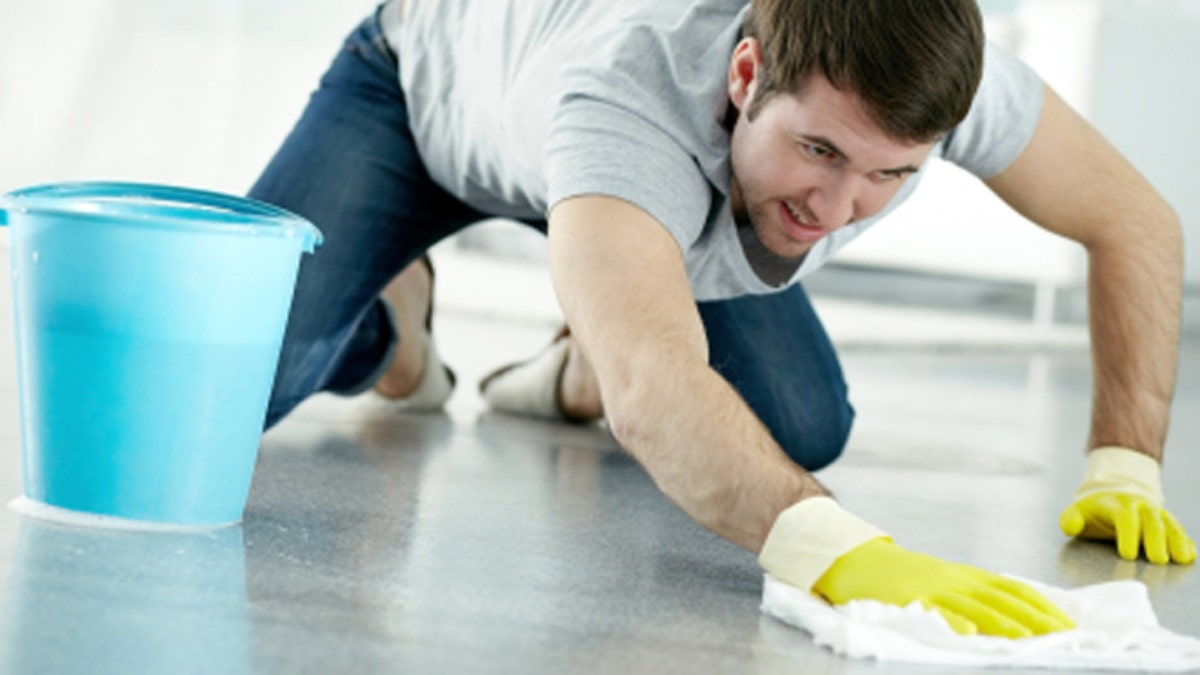
Having a healthy home isn't necessarily about making every surface spotless. (Phew!) But a bit of strategic cleaning protects you from germs and toxins. In fact, concentrations of some pollutants can be two to five times greater inside our homes than they are outdoors, according to the Environmental Protection Agency—a worrisome fact considering we spend, on average, 90 percent of our time indoors.
What's more, ordinary objects like a dirty dish towel or neglected houseplant "can provide just the right environment for harmful microbes to grow," said Kelly Reynolds, PhD, associate professor of environmental sciences at the University of Arizona in Tucson. Fortunately, small changes, whether it's shaking out your welcome mat or installing a water filter, can improve the well-being of your home—and everyone in it. Here, the most important moves to make.
Step up your doormat
About 60 percent of the dust in our home comes from outside—most of it tracked in on the bottom of our shoes, research says. And those tiny particles are made up of a combination of all sorts of icky things like human skin, animal fur, food debris, lead, and even arsenic.
"Fortunately, using the right kind of doormats can help reduce dirt, pesticides, pollen, and other pollutants in your home," said Dr. Oluremi Aliyu, assistant professor of medicine at the University of Connecticut Health Center. Pick an abrasive one (it will grab more gunk) made of synthetic fibers like nylon yarn or polypropylene.
Then don't forget to clean it: "Vacuum or shake out your mat once a week," advised Linda Cobb, cleaning expert and author of Talking Dirty with the Queen of Clean. Once a month, do a deep clean: Scrub it with a scrub brush and warm, soapy water, then hose it off.
_________________________________________________________________________
More from Health.com
How to Clean Everything Better
11 Things It's Best to Buy Organic
How to Keep Your Kitchen Germ-Free
_________________________________________________________________________
Filter your tap water
Your home H2O can contain bacteria, chemicals, and other pollutants, including heavy metals like lead. At least 74 million Americans in 42 states drink tap water containing chromium (a metal that in some forms can cause cancer), a study from the Environmental Working Group reveals.
And although chlorine is necessary to disinfect our water supply, large amounts can damage healthy cells. The chlorine can also react with other elements in water to form compounds that have been linked to cancer, miscarriages, and birth defects. Long-term exposure to water contaminants—via drinking or inhalation (such as in the steam from your shower)—can also lead to blood, bone, and lung diseases, noted Dr. Michael Roizen, chairman of Cleveland Clinic's Wellness Institute.
For extra peace of mind, invest in a water filter for your kitchen faucet that is certified by the National Science Foundation (such as Pur or Brita). In the shower, install a carbon filter to help remove chlorine as well as metals that may leach out of pipes. Remember: "The longer water has been sitting in the pipes, the higher the metal content, so let it run for a few seconds before showering," Roizen added.
Swap out your dish towels
Kitchen cloths are one of the biggest sources of bacteria in our homes, housing roughly 134,630 bacteria per square inch (anything more than 1,000 is cause for concern), according to a survey by the Hygiene Council. "Constantly damp rags are a breeding ground for bacteria like E. coli and salmonella," Reynolds said.
Research from the University of Arizona shows that kitchen rags can even contain MRSA, an antibiotic-resistant staph bacteria that can cause serious infection. To cut down on germs, let towels dry completely between uses and change them daily, Reynolds advises. Or just stick to disposable wipes to clean spills and countertops.
Don't forget the faucet
Unpleasant fact: Your kitchen sink's faucet handles may contain as many as 13,227 bacteria per square inch, reveals the Hygiene Council. Mold and bacteria (including E. coli and staph) thrive on damp surfaces like faucet handles—a place we often miss when cleaning—and can then be transferred to food during the prep process.
Sanitize sinks by scrubbing with bleach or vinegar, and clean faucets and handles with wipes specifically labeled "disinfectant." "Anything else won't kill germs, just spread them around," noted Reynolds. And dry off handles to make them less hospitable to bacteria.
Wipe down your bed frame
We all know that bedding provides a comfy home for allergy-triggering dust mites, but did you know your bed frame might, too?
"Dust mite feces (the part we're most allergic to) become part of the dust that hides in headboard and bedframe crevices," said Paul Ehrlich, MD, clinical assistant professor of pediatrics at New York University School of Medicine and president of the New York Allergy & Asthma Society.
Vacuuming and dusting can just blow particles into the air. Instead, "wipe down the frame every other week with a rag and an all-purpose cleaner," Cobb said. "And wash bedding weekly—and blankets monthly—in hot water to kill unwanted bedfellows."
Prune your plants
Greenery in your home is a good thing—plants help purify the air, removing pollutants and giving off oxygen. But if you overwater and under-prune them, they can trigger allergies and asthma. "Damp soil and decaying leaves attract mold, which can cause coughing and breathing difficulties," Ehrlich said. Your protection plan: "Let the soil dry out between waterings," Cobb advised, "remove dead leaves, and dust healthy ones monthly."
